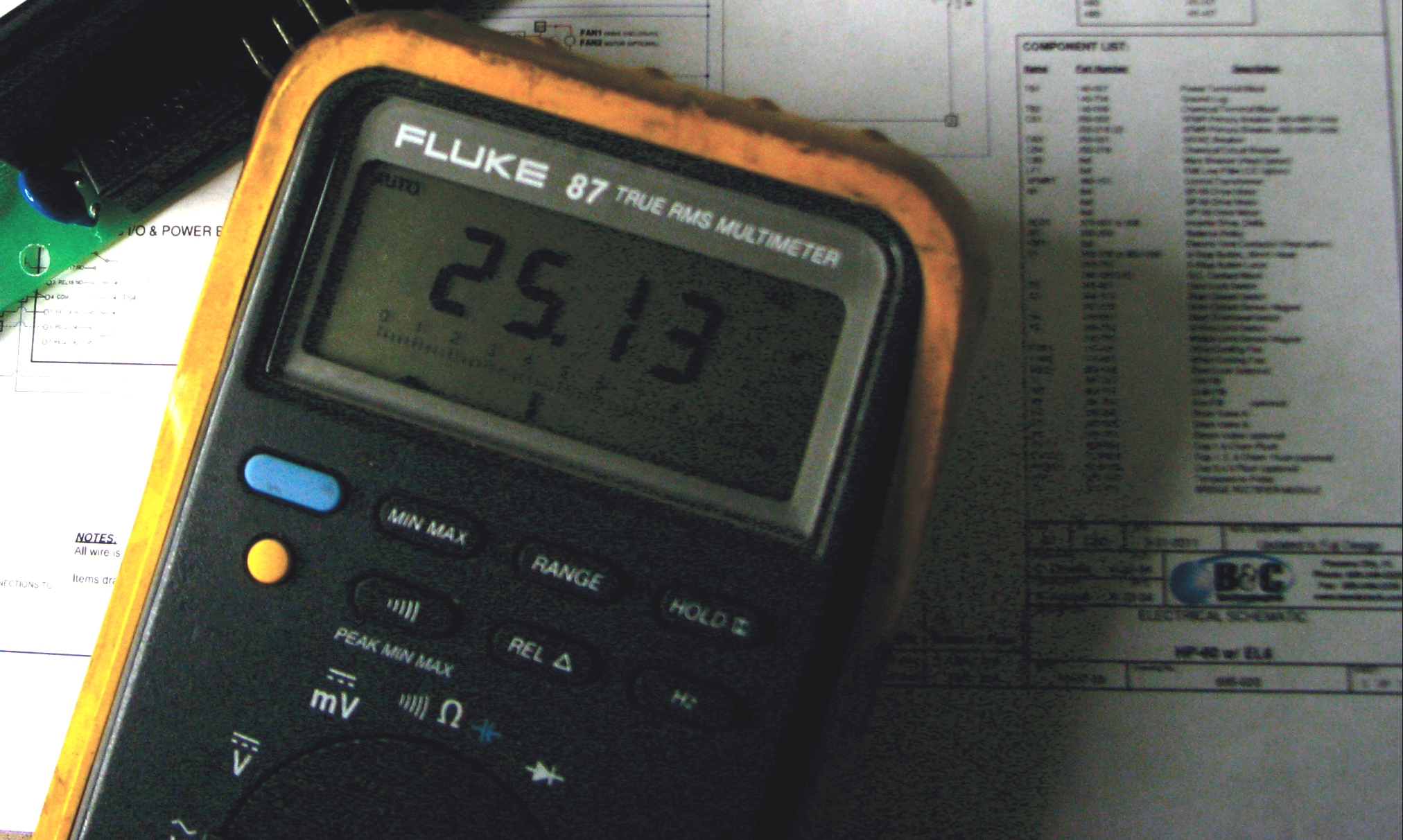The Importance of a Good Voltmeter for a Commercial Laundry Technician

The Importance of a Good Voltmeter for a Commercial Laundry Technician
The voltmeter, commonly called a multimeter, is an incredible tool, capable of troubleshooting nearly every electrical system and fault in existence. A digital multimeter (DMM) is like an electronic tape measure for making electrical measurements. It may have any number of special features, but a multimeter primarily measures volts, ohms, and amps.
Since the voltmeter or multimeter is such an important tool in a commercial laundry technician’s toolbox, it’s important that we spend our hard earned money on a quality item that will give accurate results, perform safely, and stand the test of time. Voltmeters are sold in an array of places, including auto parts stores, home goods stores, and standard department stores. While you may be lucky and find a good meter at one of these places, an industrial electrical supply company will be able to provide a true industrial meter that will provide excellent service for many years.
Choosing the appropriate multimeter for the job requires not only looking at basic specifications, but also at features, functions, and the overall value represented by a meter’s design as well as the care taken in its production. Reliability is more important than ever today and a dependable multimeter will have undergone a rigorous testing and evaluation program to ensure its quality.
User safety is also a significant concern in the design of a good multimeter. Since you will possibly be measuring high voltages, providing adequate component spacing, double insulation, and input protection helps prevent injury and meter damage if used improperly. A good multimeter should be designed to the latest, most demanding safety standards and carry approvals from UL or ETL in the United States.
Making Measurements
The most basic multimeter tasks is measuring voltage. Testing for proper supply voltage is usually the first step when troubleshooting a circuit. If there is no voltage present, or if it is too high or too low, the voltage problem should be corrected before investigating further.
The waveforms associated with ac voltages are either sinusoidal, as with the sine wave associated with electrical power, or they are nonsinusoidal and are usually are the results of harmonics, such as those generated by variable speed drives or inverters. Quality multimeters display the root-mean-square (rms) value of these voltage waveforms. High-frequency noise generated by the circuitry on an inverter can cause extremely inaccurate readings on a multimeter. However, some multimeters are now available with selectable low-pass filters and strong shielding required for more accurately measuring voltage to motors controlled by inverters or variable frequency drives.
Multimeter Safety
Making measurements safely starts with choosing the proper meter for the application and its environment. Carefully read the user manual before use, paying particular attention to the Warning and Caution sections. Refer to the Safety Checklist below.
The International Electrotechnical Commission (IEC) established safety standards for working on electrical systems. Make sure you are using a meter that meets the IEC category and voltage rating approved for the environment where the measurement is to be made. Choose a meter that also has been certified by a Nationally Recognized Test Laboratory (NRTL) such as UL, CSA, ETL, or certified European bodies such as VDE or TÜV. This certification means the meter has been independently tested and meets standards for both North America and Europe.
A multimeter is one of the most versatile electrical tools. By choosing the appropriate multimeter for the job and using it safely, electrical engineers, technicians, electricians, and other electrical professionals can perform a wide variety of measurements using a single device.
Safety Checklist
- Inspect test leads for physical damage before making measurements
- Use the meter itself to check continuity of the test leads
- Use only test leads that have shrouded connectors and finger guards
- Use only meters with recessed input jacks
- Select the proper function and range for your measurement
- Be certain the meter is in good operating condition
- Follow all equipment safety procedures
- Always disconnect the “hot” (red) test lead first
- Don’t work alone
Look for these safety features in a multimeter:
- Fused current inputs
- Use of high-voltage fuses (600 V or higher)
- High-voltage protection in resistance mode (500 V or higher)
- Protection against voltage transients (6 kV or higher)
- Safety-designed test leads with finger guards and shrouded terminals
- Independent safety organization (UL, CSA, etc.) approval/listing